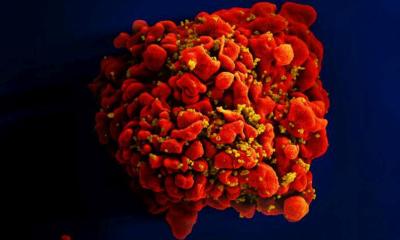Controlling infectious diseases in north-east Europe
Olga Ostrovskaja reports
Several years ago the Partners of the Northern Dimension Partnership in Public Health and Social Well-being (NDPHS) was organised to serve the Baltic Sea region. Due to the very different levels of public healthcare systems in north-east European countries, the NDPHS decided its main mission is to reduce social and economic differences and improve quality of life and demographic issues.
Combating infectious diseases is therefore one of the NDPHS priorities. It was decided that healthcare systems in this region should be strengthened, with an initial and particular emphasis on HIV/AIDS prevention and treatment. The north-east European region is one of the worst hit on our continent. HIV prevalence nears 1% in adult populations in Estonia and in some regions of the north-west Russia (especially in Kaliningrad and Petersburg) and Latvia. The worst local HIV-infection outbreaks were seen five to seven years ago, but new cases are still emerging at an alarming rate, mostly affecting young people in their prime. The disease may cause a reduction in the population, reduce the workforce and directly and indirectly snap off several percent units from the GNP.
Social sources of HIV infection include (but are not limited to) prostitution, human traffic, drug abuse and immigration from countries worst hit by the epidemic.
HIV/AIDS can be seen as a challenge not only to the overall healthcare policies of the nations, but also to the wider sector of society, including political structures. In all countries in our region most socially marginalised people face the greatest risk of contracting HIV and some are among those least likely to be able to afford treatment.
Russia faces one of the world’s fastest growing HIV epidemics. The cumulative number of officially registered HIV cases was almost 0.5% of the total population in 2007. The real number of infected people is higher – according Russian Federal AIDS Centre leaders, about one million. The regional differences are very big there. Drug abuse using needles is the overwhelming risk factor for new infection rates in this area.
Another global problem is the co-infection of HIV and hepatitis B and C and HIV and tuberculosis (TB) – which kills about 60% of the HIV-infected people in Russia today. Every year thousands of new cases of chronic hepatitis are registered.
26.01.2010





